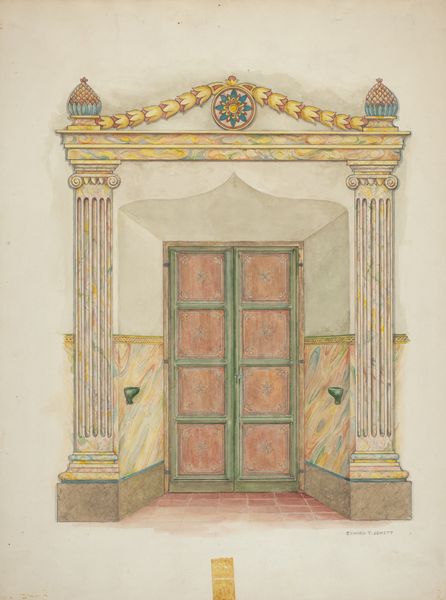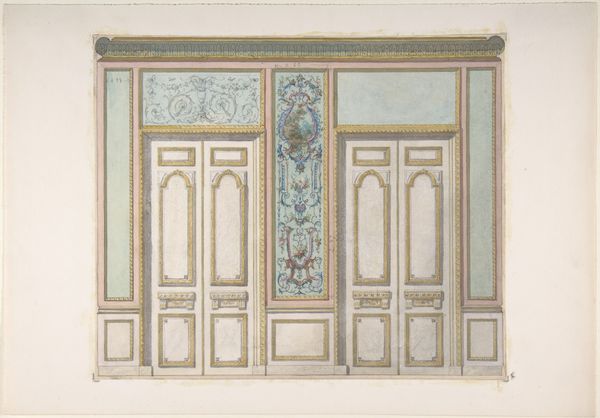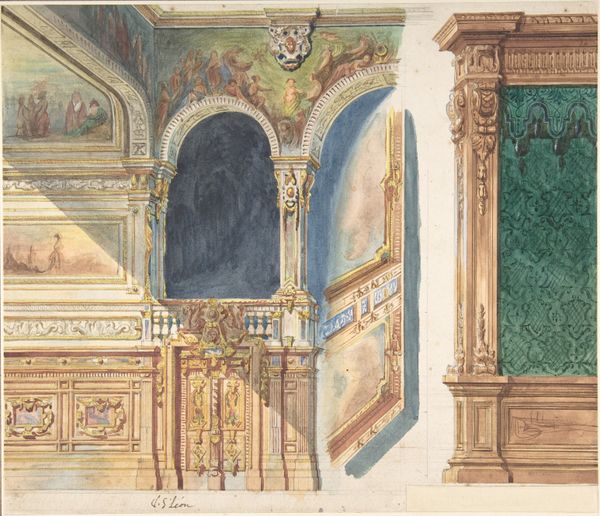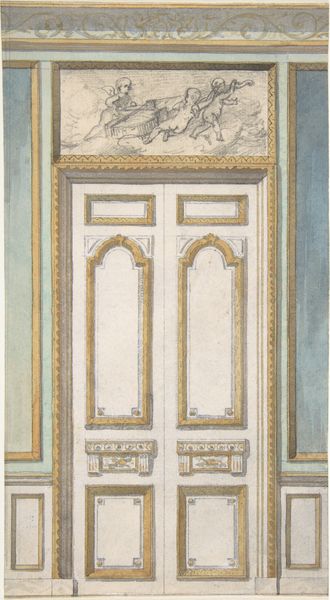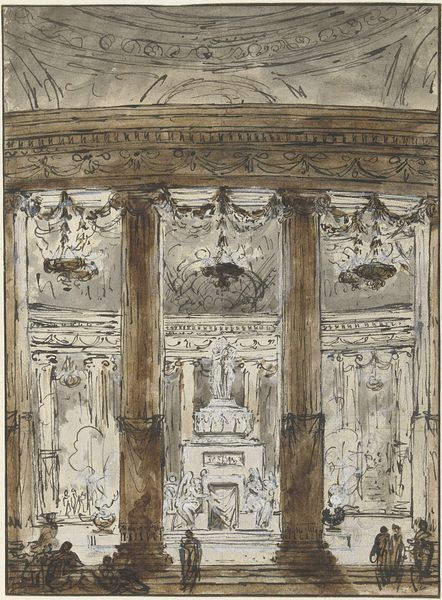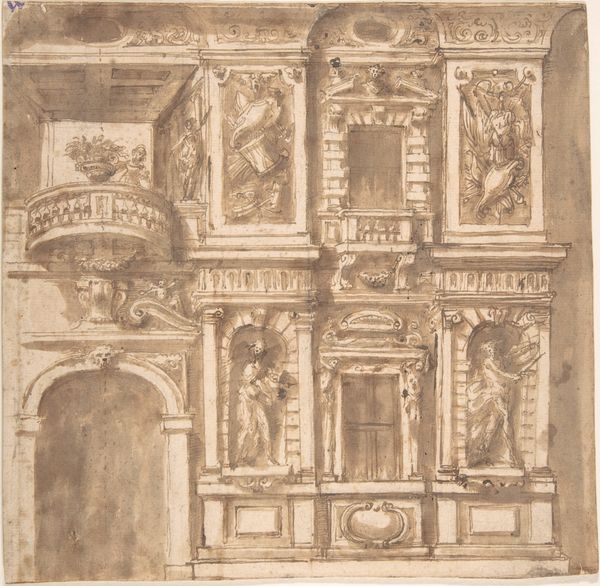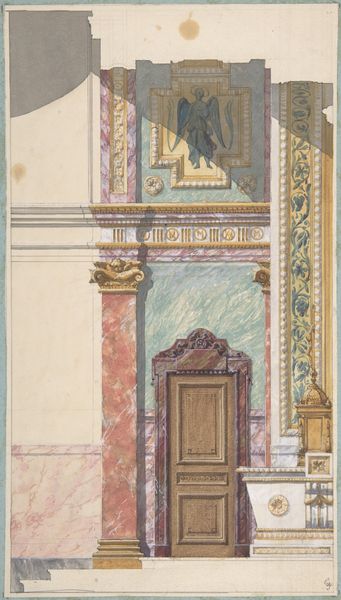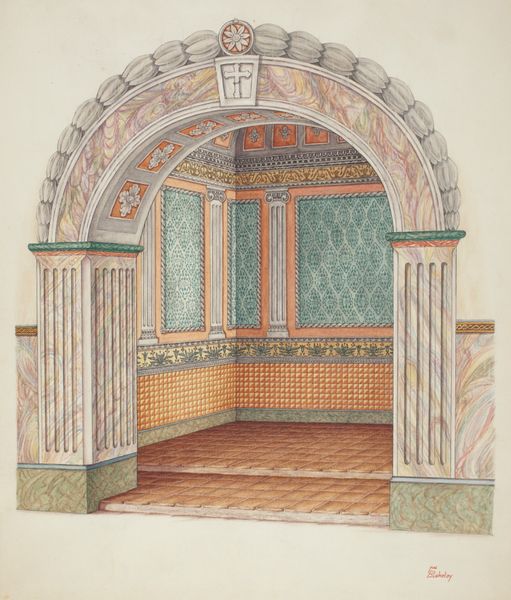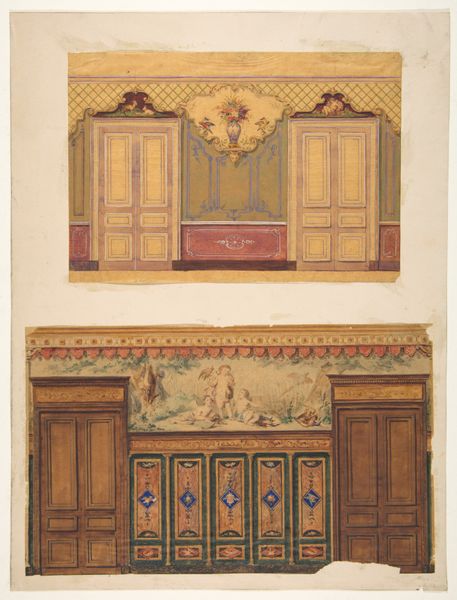
Design for the Vestibule of the Chateau de Lude (Sarthe) 1850 - 1900
0:00
0:00
drawing, print, watercolor, architecture
#
drawing
# print
#
watercolor
#
academic-art
#
watercolor
#
architecture
Dimensions: Overall: 10 3/8 x 14 3/4 in. (26.3 x 37.5 cm) image: 7 5/8 x 7 3/8 in. (19.4 x 18.7 cm)
Copyright: Public Domain
Curator: Here we have Jules-Edmond-Charles Lachaise's "Design for the Vestibule of the Chateau de Lude (Sarthe)," likely created between 1850 and 1900. It’s a watercolor and print drawing, currently residing at The Metropolitan Museum of Art. Editor: It's immediately striking how serene and subdued this space feels. The colors are so muted, and the symmetry, though grand, somehow conveys a quiet elegance. Curator: Precisely. It offers insight into the architectural aspirations of the French aristocracy. These renderings played a crucial role in shaping these spaces, and reflect their societal power at that time. The Chateau itself, a symbol of privilege, dictated the aesthetic of its interiors, perpetuating an image of luxury and refinement. Editor: It also evokes thoughts of confinement to me. I think about who had access to this vestibule and the power dynamics implicit in these designed spaces. Were marginalized communities even permitted within the Chateau walls? How does this visual contribute to an idealized vision of class and identity? Curator: An important point. The architectural elements themselves were steeped in meaning. The elaborate embellishments along the walls, the details on the ceiling, the marble or tile flooring– they all reinforce notions of inherited authority. The chateau’s architecture itself became a statement of its inhabitants' place within society's rigid hierarchy. Editor: Yes. But perhaps this aesthetic also became a gilded cage? How did these elaborate spaces and imposed notions of style dictate the way aristocrats lived their lives and engaged with the rest of the world? I find myself considering that there is a lack of warmth and personality to the scene that hints towards an imposed lifestyle. Curator: A thought-provoking perspective. Lachaise's work lets us consider not just the material aspects of aristocratic life but also their role within France's complicated socio-political history. Editor: The study of this piece offers an important starting point for the evaluation of how art can at once glorify and mask the reality of inequality. Curator: I agree. Art’s position within that complex dichotomy deserves continued attention.
Comments
No comments
Be the first to comment and join the conversation on the ultimate creative platform.
